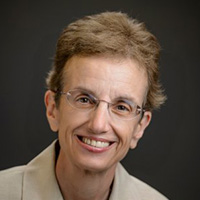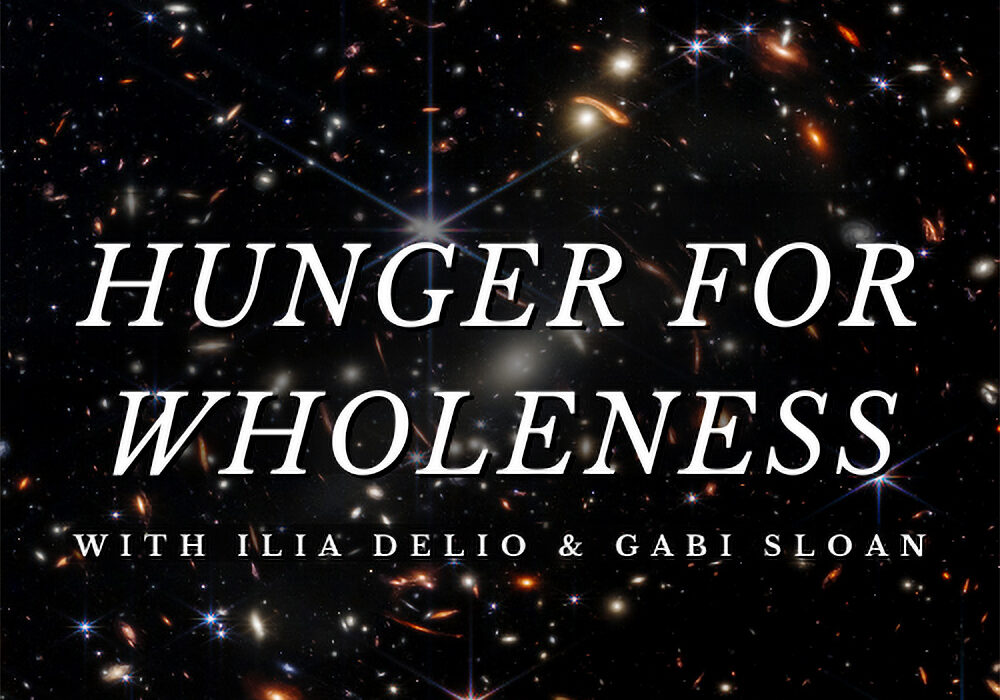On Sex, Gender and Personhood
Q: A student from St. Dominic’s Priory in Adelaide Australia wrote in last week with the following questions on LGBTQ personhood in light of Catholic teaching. Although I am by no means an expert in this area, I can offer some reflections on personhood in the 21st century. These are some of her questions:
– In terms of those who identify as being Transgender, how do they fit into the idea that people are made in the image of God?
– In the Vatican’s new teaching guidance “Male and Female He Created Them” it says to teach in Catholic Education the idea that biological gender is naturally fixed at birth and part of God’s creation plan. With this new guidance being signed, do you agree or disagree with the concept and why?
– How might the addition of the LGBTQ+ community in the scriptures and in the religious teachings impact the Catholic Church community?
 Ilia: What is a human person? The Roman senator Boethius wrote in the fifth century that a person “is an incommunicable substance of rational nature.” I am sure if we asked this question today to five different people across five generations, we would get five different responses. A Catholic will usually say that a person is created in the “image of God.” Of course we really do not have a clue of what this means, unless we know what the name “God” means and there are a number of people who are certain about the meaning of God and thus the meaning of “human person.” And this is highly problematic, since “God” is incomprehensible mystery and so too is the human person. To be created in the image of God is to be created in holy mystery. Part of the problem on the reception of the term “image of God” is the way it was merged with Aristotelian philosophy. Aristotle was a proponent of biological essentialism which refers to an innate and natural “essence.” He distinguished between what a person is (essence) and the characteristics of the person (accidents). Hence maleness and femaleness are biologically essential terms and what is essential is intrinsic and therefore cannot be changed.
Ilia: What is a human person? The Roman senator Boethius wrote in the fifth century that a person “is an incommunicable substance of rational nature.” I am sure if we asked this question today to five different people across five generations, we would get five different responses. A Catholic will usually say that a person is created in the “image of God.” Of course we really do not have a clue of what this means, unless we know what the name “God” means and there are a number of people who are certain about the meaning of God and thus the meaning of “human person.” And this is highly problematic, since “God” is incomprehensible mystery and so too is the human person. To be created in the image of God is to be created in holy mystery. Part of the problem on the reception of the term “image of God” is the way it was merged with Aristotelian philosophy. Aristotle was a proponent of biological essentialism which refers to an innate and natural “essence.” He distinguished between what a person is (essence) and the characteristics of the person (accidents). Hence maleness and femaleness are biologically essential terms and what is essential is intrinsic and therefore cannot be changed.
As I indicated last month in a blog on Pride, modern biology has shed new light on the development of personhood in which essentialism no longer adequately defines the constituency of personhood. Beginning with evolution and the emergence of the human person out of a long process of biological development, we now know that genetics, environment, dynamical systems, information and other processes are involved in the complexification of life from which the human person emerges. The origin of sexual reproduction in prokaryotes is around 2 billion years ago when bacteria started exchanging genes via the processes of conjugation, transformation, and transduction. The first sexual beings to emerge perhaps 2.5 billion years ago were what biologists call isogamous —somewhere between male and female. Many organisms, including some fungi, algae and single-celled pond-swimmers, still practice isogamy. Sex evolved in biological species because of nature’s propensity toward optimal life. Sex creates new gene combinations that may be more fit than previously existing ones or may simply lead to reduced competition among relatives. Some researchers claim that sex actually acts as a constraint on genetic variation. That is, sex acts as a coarse filter, weeding out major genetic changes, such as chromosomal rearrangements, but permitting minor variations. Because sex combines genes from two individuals, sexually reproducing populations can more easily combine advantageous genes than can asexual populations. Sex plays a role in giving complex dynamical systems social group stability by facilitating gene diversity.
Yet, biologists also indicate that the various elements of what we consider “male” and “female” don’t always line up neatly, with all the XXs on one side and all the XYs on the other. It is possible to be XX and mostly male in terms of anatomy, physiology, and psychology, just as it’s possible to be XY and mostly female. Bu polygenetic types have been identified among some species, such as the Cardinal. Cardinals are one of the most well-known sexually dimorphic birds in North America—their bright red plumage in males is iconic—so people easily notice when they look different. In mammals, males have one copy of each sex chromosome (X and Y) while females have two copies of the X chromosome. In birds, it’s the opposite.Their sex chromosomes are called Z and W, and it’s the females that have a single copy of each (ZW), whereas the males have two of the same (ZZ). A phenomenon among birds is known as gynandromorphy where half the body is male and the other half is female. “This remarkable bird is a genuine male/female chimera,” says Daniel Hooper, a postdoctoral fellow at the Cornell Lab of Ornithology. Gynandromorphs, known as “half-siders” among ornithologists, are uncommon but not unheard of. They likely occur across all species of birds but we’re only likely to notice them in species where the adult males and females look distinct from each other, a trait known as sexual dimorphism.
Having an idea of what science tells us about nature can clear the air of some misguided religious ideas. Nature is simply not binary, clear-cut or fixed; rather nature is dynamic, open and oriented toward flourishing life. Sex is part of evolution and what we can say is that life prefers more life.The Catholic Church takes an ambivalent stance with regard to evolution (see Humani generis para. 36- 37) but there is no other explanation for the emergence of the human person other than evolution. We are the outcome of nature’s development.
The politics of sex can be traced back to Aristotle whose views on woman figured prominently in the construction of Catholic doctrine. Aristotle strongly subscribed to the belief that the universe was composed of opposites. In a document cited by Aristotle that goes by the name of The Pythagorean Table of Opposites, we find the attributes curving, dark, secret, ever- moving, not self-contained and lacking its own boundaries aligned with Female and set over against straight, light, honest, good, stable, self-contained and firmly bounded on the Male side” (Carson, 124).[i] Aristotle found women to be inferior due to the fact that their bodies were too cold to produce seed (or semen). In his acclaimed work On the Generation of Animals, Aristotle states that, “For the first principle of the movement…whereby that which comes into being is male, is better and more divine than the material whereby it is female. The male, however, comes together and mingles with the female for the work of generation” (Aristotle, Book II). Thus, women merely function as a depository for sperm and a nourishing receptacle for a developing fetus. He goes on to make the argument that a woman is a “…deformed male; and the menstrual discharge is semen, though in an impure condition; i.e. it lacks one constituent…the principle of the Soul” (Aristotle, Book III). Aristotle contended that both sexes had a soul that was capable of reason. However, women were doomed to be subservient to men because that they were unable to “…control themselves physically and psychologically through the exercise of reason the way men can” (Whaley, 16).
Interestingly, Aristotle used his biology of sex to determine each gender’s role in society. He felt that the rational, strong, active, and perfect form of humanity ought to receive an education and hold positions of power. Women, being endowed with irrationality, weakness, passivity, and imperfection, were not capable of abstract reasoning and were bound to the domestic sphere. Unfortunately, this assessment was the prevailing view until the Middle Ages and a lot of Aristotle’s ideas were subsumed into the Christian doctrine of original sin and the fall of Adam due to the weakness of Eve.
Gender as a social construct emerged in the modern period. Women resisted the constraints of gender identity and began to think deeply about boundaries and ontologies in a way that correlated with discoveries in science, including cybernetics and complex dynamical systems. Critical feminism emerged in the postmodern milieu in response to the oppression of women and the failure of modernity to achieve liberation. In the 20th century, a new turn to the subject emerged through a deconstruction of ontologies and a new consideration of boundaries, not as fixed boundaries but as negotiated relationships.
Judith Butler’s philosophy of performance took a cybernetic approach to gender in which personhood is not defined substantively by what someone is but, performatively, by what someone does. Butler’s gendering as performance resonates with the root meaning of persona as the sounding through of an actor on stage. Her fluid view of gender suggests breaking down, “troubling,” (Butler, 1990), or “undoing” (Butler, 2004) the binary categories of “feminine” and “masculine.” Butler argues that as soon as new parents announce “it’s a girl” then the process of gendering begins. With that phrase “it’s a girl,” the “girling” of the girl starts to be performed, and the femininity of that individual begins to be constructed. Girls and boys are made feminine and masculine by selecting from available meanings about gender.[2]
Gender is not “natural,” Butler claims, but a stylized repetition of acts.[3] Gender is the experience of subjectivity whereby the experience of self or interior center is at the same time the acting of self; overcoming the boundaries of self by performing self. One acts as authentic being in the face of socially defined gender or political categories of race. Acting or performance presupposes something to overcome through action. Gender performance is an ongoing construction of self-identity. By performing identity, one gains identity, and in gaining identity, one performs identity; gendering is a cybernetic process. Since personhood is relational, “performing” means engaging in a particular being-in-relationship. Personal identity, therefore, is not a substance in itself but in relation to another. Just as information in a system does something, that is, it conveys a message, so too, performance is the enactment of information in the expression of personhood.
So these ideas bring us back to the questions at hand which can be summed up in this way: is there room for consideration of LGBTQ persons in the Catholic Church? And the short answer is no. Apart from a full acceptance of evolution, modern biology and a reconsideration of original sin in the context of evolution, there is little hope of moving beyond biological essentialism entrenched in the phrase “created in the image of God.” The Church’s core doctrine of salvation is based on original sin and thus to alter, change or eliminate the concept of original sin would have profound implications for the doctrines of salvation and redemption. And yet, modern science and philosophy are opening up entirely new horizons of personhood in the 21st century. Catholic doctrine and modern science must be reconciled if LGBTQ persons are to be fully accepted in the institutional Church as persons created in the image of God.
Creative Personhood:
Despite the inability of official Catholic teaching to widen the doors of understanding on sex and gender in the modern period, there are a number of theologians who have written eloquently on the dynamism of personhood. Here I am thinking of the great 20th century theologian, Karl Rahner, who spoke of the human person as a question drawn by the horizon of mystery. Beatrice Bruteau distinguished between an individual and a person by saying that an individual is on the first stage of reflexive consciousness while personhood reflects a higher stage of self-reflexive consciousness. Hence, she indicates, only persons can enter into communion consciousness; individuals remain external to one another.[4] These various understandings lead to a working definition: A person is a conscious being in relation to everything else, one in whom the matrix of relational life is expressed in a particular way and who contributes to the unfolding of the world in a particular way. Like an eddy in a stream, a person is a vital locus of centering consciousness in the flow of evolution.
Modern science, including psychology, underscores the dynamic nature of personhood which is constituted by physical-biological behavior and the completion of self within the world. We create the world through our relationships and in turn the world makes a demand on us to respond in relationship.The human person, therefore, emerges from the dynamic interplay of nature and environment. Personhood is a formative process of establishing a center of identity based on biological, physical and cultural materials, and shaping those materials into an understanding of self, insofar as self is in relation to the world in which it lives. Two criteria that mark the emergence of personhood are coherence and fecundity, that is, struggling to exist amidst diverse materials by making every effort to integrate the forces of existence, and optimizing life by regulating, judging, perceiving, planning and decision making. What we are as persons is never in isolation but always embedded in the world from which personhood emerges. The integral relationship between person and world means when our understanding of personhood changes so does our understanding of the world, and when our understanding of the world changes, so does our understanding of personhood.
If the human person is a question in search of meaning, then only a God of love can satisfy the longing of the human heart. In an insightful paper on “Sacred Self-Expression: Transgender Authenticity and Divine Love,” Rachael Huegerich wrote:
God loves in and through our love for one another. Only in actualization can love be experienced on a personal level in the attraction and relations between one’s deepest center of being and another. . . . When we choose personalized love, we invite God’s deeper actualization. In each new relationship, we bring new forms of love into existence.[5]
To be image of God is to live in holy mystery and thus to live in the personalization of love. How a person comes to this place of love cannot be proscribed, mandated or regulated. Gender politics subvert, control and objectify personhood and lead to what Alfred North Whitehead called, a “fallacy of misplaced concreteness.” The Church would do well to shift its focus from gender to personhood; from essentialism to love; from fidelity to freedom. For every human person whether cis, trans, gay, queer, reflects the mystery of God and is called to live in the freedom of love.
Notes
[i] Carson, A. (1995). Glass, irony, and god. Eighth Avenue, NY: New Directions Books.
[2] Mary Holmes, What is Gender? Sociological Approaches (New York: SAGE publ., 2007), 60.
[3] Judith Butler, Gender Trouble: Feminism and the Subversion of Identity (New York: Routledge, 1990), 9, 522; Thekla Morgenroth and Michelle K. Ryan, “Gender Trouble in Social Psychology: How Can Butler’s Work Inform Experimental Social Psychologists’ Conceptualization of Gender?” Frontiers in Psychology July 27, 2018 https://www.ncbi.nlm.nih.gov/pmc/articles/PMC6072877/
[4] Beatrice Bruteau, “Freedom If Anyone is in Christ, That Person is a New Creation,” in The Grand Option: Personal Transformation and a New Creation (Notre Dame, IN: University of Notre Dame Press, 2001), 157.
[5] Rachael Huegerich, “Sacred Expression: Transgender Authenticity and Divine Love,” Undergraduate Research paper, Villanova University, 2019.
 View print-friendly version
View print-friendly version
1 Comments
Related Posts

Hunger for Wholeness Podcast Launches!
Story matters. Our lives are shaped around immersive, powerful stories that thrive at the heart of our religious traditions, scientific inquiries, and cultural landscapes. All stories – big and small…


The established male and female in living things is the reproductive force that allows us to further grow in the knowledge that according to Jesus in speaking to humans He referred Himself to the Truth that He is the Life in all living things. Deacon’82 Environment and Global Interdependence..